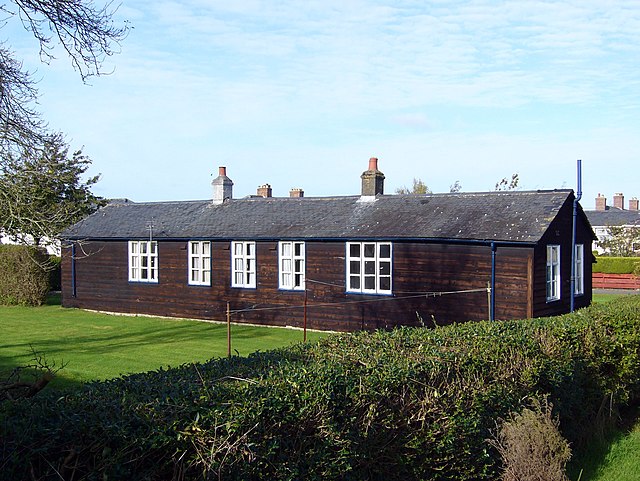H. M. Factory, Gretna was Britain's largest cordite factory in World War I. The government-owned facility was adjacent to the Solway Firth, near Gretna, Dumfries and Galloway. It was built by the Ministry of Munitions in response to the Shell Crisis of 1915. The capital cost was £9,184,000 and it covered 9,000 acres (3,600 ha). The cost of working it from September 1916 to September 1918 was £12,769,000, during which time it produced cordite valued at £15,000,000, though it was claimed that without it the cordite would have had to be imported from the USA at a cost of £23,600,000.
Railway sidings at MoD Depot Smalmstown in 2005
The site of Wylies Halt where workers from Eastriggs township would get trains into H. M. Factory, Gretna
An original wooden workers house in Eastriggs
St John's Episcopal Church, Eastriggs was built in 1917.
Cordite is a family of smokeless propellants developed and produced in Britain since 1889 to replace black powder as a military firearm propellant. Like modern gunpowder, cordite is classified as a low explosive because of its slow burning rates and consequently low brisance. These produce a subsonic deflagration wave rather than the supersonic detonation wave produced by brisants, or high explosives. The hot gases produced by burning gunpowder or cordite generate sufficient pressure to propel a bullet or shell to its target, but not so quickly as to routinely destroy the barrel of the gun.
A sectioned British 18-pounder field gun shrapnel round, World War I, with bound string to simulate the appearance of the original cordite propellant
Close-up of cordite filaments in a .303 British Rifle cartridge (manufactured in 1964)
Bird's-eye view of a portion of Canadian Explosives Ltd., Nobel, Ontario
MV Cordite, Royal Military College of Canada








